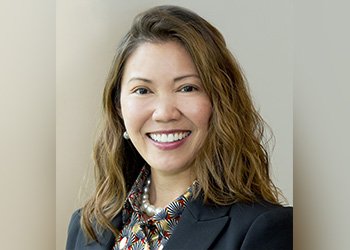Dr. Kim Ariyabuddhiphongs, Helping Others with a Passion
 Kim Ariyabuddhiphongs, MD, MBA, went to the same high school in the Philippines as Sheila Lirio Marcelo, the founder of Care.com. She remembers listening to Marcelo's graduation speech when she was younger and feeling inspired.
Kim Ariyabuddhiphongs, MD, MBA, went to the same high school in the Philippines as Sheila Lirio Marcelo, the founder of Care.com. She remembers listening to Marcelo's graduation speech when she was younger and feeling inspired.
"Sheila moved to the United States and applied her entrepreneurial spirit to her work," Dr. Ariyabuddhiphongs says. "She embodies the journey of taking a personal passion then translating it into something that helps others."
Dr. Ariyabuddhiphongs is doing something along these lines, herself. As the Associate Chief Medical Officer of the BILH Performance Network, she supports the hospital system's work in diabetes, health equity, and other areas she's passionate about. She enjoys leveraging data and analysis to motivate healthcare leaders and help drive decisions.
"I like to describe myself as a catalyst, or a champion of transformation and improvement in providing quality, cost-effective care," she says. "It gives me great satisfaction to watch this translate into patients getting the help they need."
Like Shiela Lirio Marcelo, Dr. Ariyabuddhiphongs has followed her passions to lead her to where she is today, but that's not to say they've always led her in a straight line. She has wide-ranging interests, and one of the more challenging aspects of her career journey has been choosing which to pursue at which time.
"I remember early on musing on various career paths with someone more advanced in their career," she says. "I love reading and think of written communication as one of my strengths. I grew up in a family that regularly speaks three languages and value the power of being succinct to get your point across. The person I was talking to told me 'You will never become a writer.' It was hugely disappointing to me. Ultimately, though, I did not pursue a writing career and I'm all the better for it. And I'm not ruling out writing a book one day, either."
BILH's theme for Asian American and Pacific Islander Heritage month this year is "Uniting as one to advance the future of healthcare." Dr. Ariyabuddhiphongs says this reminds her of the proverb "If you want to go fast, go alone. If you want to go far, go together."
"I particularly enjoy collaborating with others and strongly believe in applying a group's collective intelligence to solve complex problems," she says. "My favorite moments of every week are when I bring folks together from different parts of the organization and we plan steps in pursuit of a common goal."
If Dr. Ariyabuddhiphongs had one piece of advice for the next generation of AAPI folks in medicine, it would be to stay true to yourself.
"Follow your passion, and don't forget to help others along the way. You are stronger than you think. Draw from that strength."
